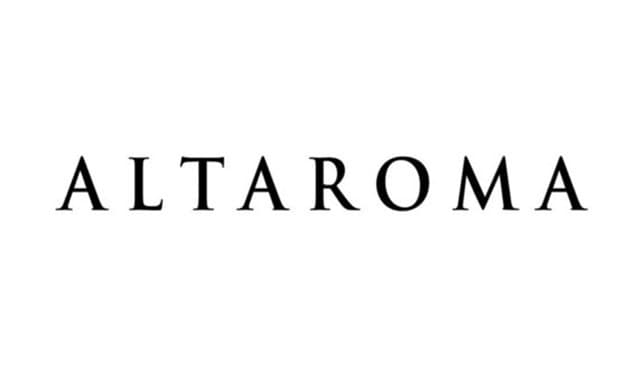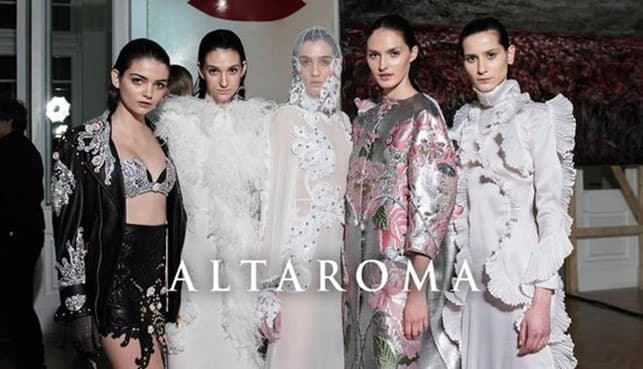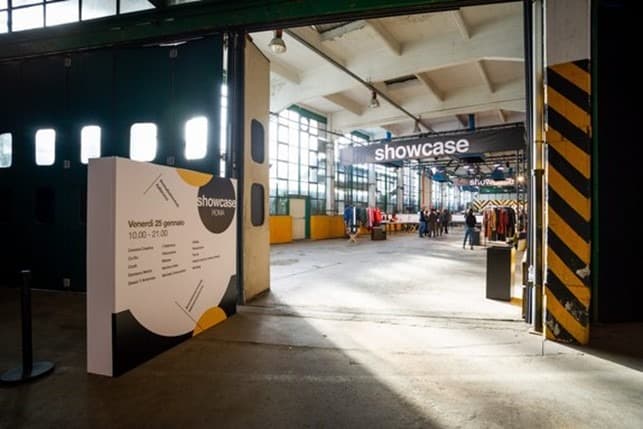
ALTAROMA
ALTAROMA IS THE ORGANIZATION THAT DEALS WITH ITALIAN HIGH FASHION, WITH REGARD TO SCOUTING, FASHION SHOWS AND EXHIBITIONS
THE TRANSFORMATION OF ROME
AltaRoma. It was the end of the 19th century when Rome underwent a strong political, economic and cultural transformation. New lifestyle and consumption habits started which also involve clothing and therefore new costume requirements. In this context, in Rome, the craftsmanship of skilled tailors developed, which gave the capital the basis to become, few centuries later, the undisputed protagonist of men’s and women’s haute couture.
The streets of the capital are illuminated by the windows of the ateliers and immediately after by those of the department stores of the early 20th century. Rome then became the seat of the dolce vita and the reference point of “Hollywood sul Tevere”. Meticulousness, precision in cuts and hand embroideries, became the most sought after elements by celebrities and royalty of the time, who arrived in Rome to commission the most beautiful tailor-made creations. Elegant, unique, precious and timeless creations are those of the Fontana sisters, Simonetta Carosa, Alberto Fabiani and Emilio Schubert Roman tailors who answered the call of Giovanni Battista Giorgini in the 1950s when he organized the first all-Italian fashion show in Florence.
HIGH FASHION IN ROME
From Florence, in the mid-1960s, high fashion houses moved their presentations to their ateliers in Rome, while prêt-à-porter fashion was taking shape in Milan with the first Krizia, Albini and Missoni fashion shows. Italian fashion has two capitals: Rome for high fashion and Milan for prêt-à-porter. The capital stood out in the Italian scene with a good offer of craftsmanship, tradition and workforce, but it was still far from the glamor of Parisian high fashion. The creation of the Fashion Committee in 1949 did not change the situation.
When, towards the end of the 1960s, prêt-à-porter – that is, mass-produced clothes to wear every day – arrived in Italy from the United States and France – most companies abandoned high fashion due to the too high costs, and devoted themselves to the big industry, moving the fashion shows to Milan.
Rome remained with the few brands that continued to deal with high fashion. In fact the Roman ateliers satisfied the requests of wealthy ladies, wives of politicians and showgirls. For instance, the name of Gattinoni, Gai Mattiolo, Roccobarocco, Lorenzo Riva and Raffaella Curiel stood out. They were accompanied by men’s tailors of the caliber of Brioni, Litrico and Caraceni. On this path, new names such as Fendi, Irene Galitzine, Valentino and Renato Balestra affirmed themselves.
ALTAROMA: THE BEATING HEART OF ITALIAN HIGH FASHION AND NOT ONLY
In 1954, the great names of Roman fashion deserted Giorgini‘s fashion shows to found the Roman Centre for Italian High Fashion, believing that Rome was the best option to be the capital of fashion. Despite the failure of this will, in this context, a historic event such as AltaRoma was created and developed. The organization saw the participation, among others, of the Rome Chamber of Commerce, the Lazio Region and the Italian Trade Agency. It promotes and protects the excellence of Made in Italy and the craftsmanship of stylists and designers with scouting and training activities because the aim is to support young talents and new brands.

Since 2002 it has been proposed as a meeting point to explore new trends. It offers an important national and international showcase for all creatives in the fashion industry. In fact, the projects Fashion Hub, Who Is On Next?
And Showcase were created by AltaRoma, aimed at enhancing emerging talents, small tailoring companies. And independent designers who contribute to the protection and development of the Italian Fashion System.


ALT EMMANUELLE

